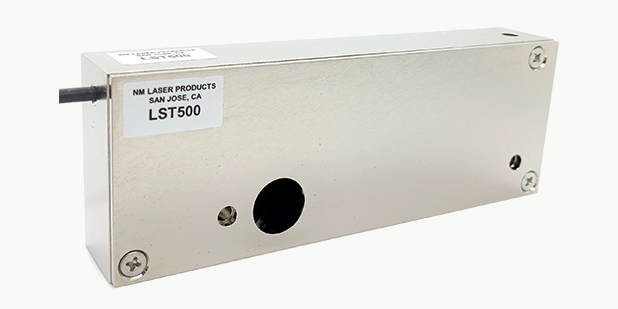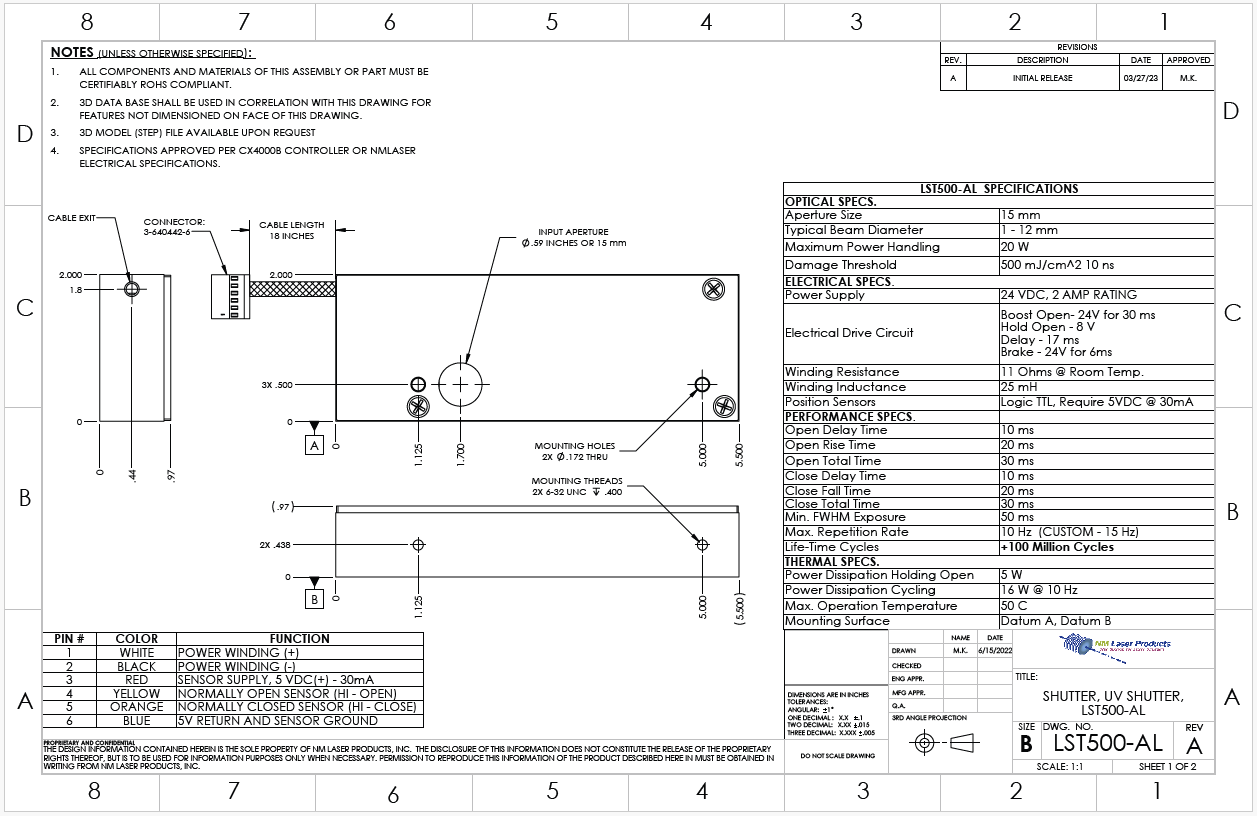
LST500-AL Laser Shutters
Features
Optical Power Handling: 20 W
High Rep Rate: 10 Hz
Aperture: 15 mm
High LIDT: 500 mJ/cm2
Optics: Aluminum
Optical Power Handling: 20 W
High Rep Rate: 10 Hz
Aperture: 15 mm
High LIDT: 500 mJ/cm2
Optics: Aluminum
$995.00
Applications
Laser Safety
High Energy Pulse Gating
Rep-Rate Divider
Large Beam Application
Laser Safety
High Energy Pulse Gating
Rep-Rate Divider
Large Beam Application
Optical Specifications
| Aperture Size | 15 mm |
| Typical Beam Diameter | 1 – 12 mm |
| Maximum Power Handling | 20 W |
| Optics | Aluminum |
| Damage Threshold | 500 mJ/cm2 at 10 ns |
Performance Specifications
| Open Delay Time | 10 ms |
| Open Rise Time | 20 ms |
| Open Total Time | 30 ms |
| Close Delay Time | 10 ms |
| Close Fall Time | 20 ms |
| Close Total Time | 30 ms |
| Min. FWHM Exposure | 50 ms |
| Max. Repetition Rate | 10 Hz (CUSTOM – 15 Hz) |
| Lifetime | Over 100 Million Cycles |
Thermal Specifications
| Thermal Power Dissipation Holding Open | 5 W |
| Thermal Power Dissipation, Cycling | 16 W @ 10 Hz |
| Max. Operating Temperature | 50 C |
| Mounting Surface | Datum A, Datum B |
Custom Options
| Dual Position Sensors | Available |
| Custom Repetition Rate | Up to 15 Hz |
| Diverting Port to Power Meter | Available |
Electrical Specifications
| Power Supply | 24 VDC, 2 AMP RATING |
| Electrical Drive Circuit | Boost Open = 24 V for 30 ms Hold Open = 8 V Delay = 17 ms Brake = 24 V for 6 ms |
| Recommended Controller | CX4000B |
| Winding Resistance | 11 ohms @ Room Temp. |
| Winding Inductance | 25 mH |
| Position Sensors | Logic TTL, Require 5 VDC @ 30 mA |
| Cable/Wire Type, No., Length, Termination |
26 g Teflon, six wires, 18 in., MTA-100 |
Wire Pin # - Color
| 1 – White | Power Winding (+) |
| 2 – Black | Power Winding (-) |
| 3 – Red | Sensor Supply, 5 VDC(+) – 30 mA |
| 4 – Yellow | Normally Open Sensor (HI – Open) |
| 5 – Orange | Normally Closed Sensor (HI – Close) |
| 6 – Blue | 5 V Return and Sensor Ground |
Attributes
| Size | 5.5 in. x 0.97 in. x 2.0 in. |
| Weight | ~1 lb. |
| Classification | Safety/Process |
| Gravity Considerations | None |
| Specifications Date | March 23, 2023 |
